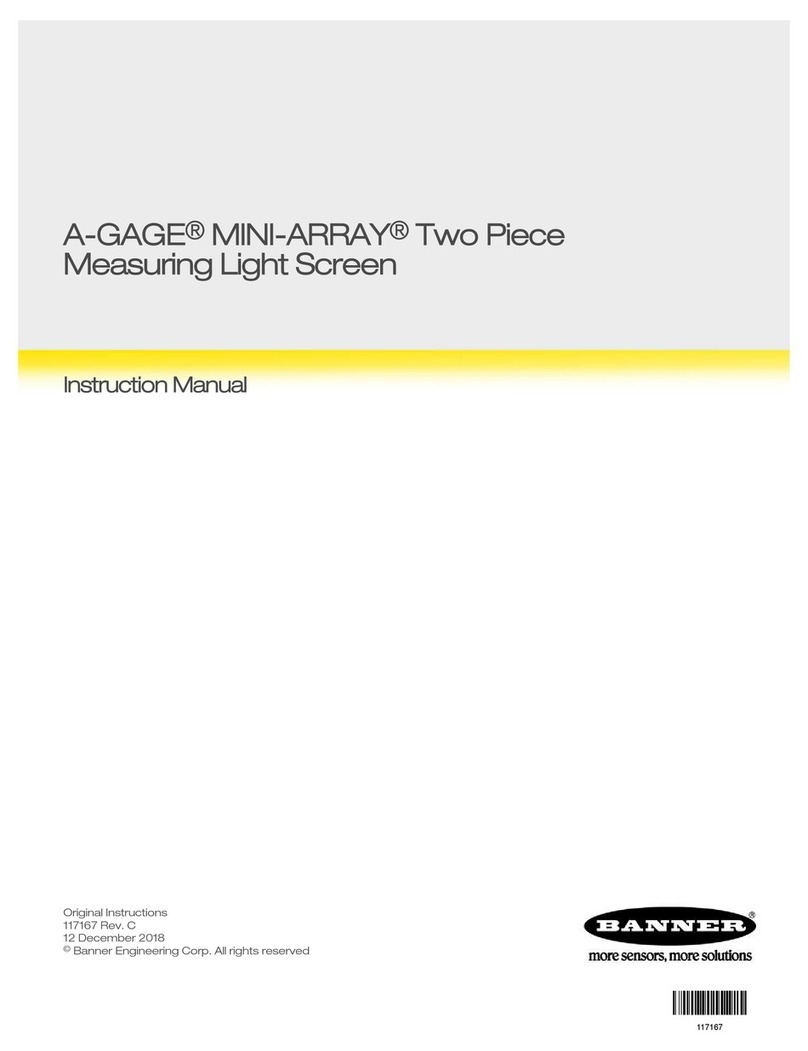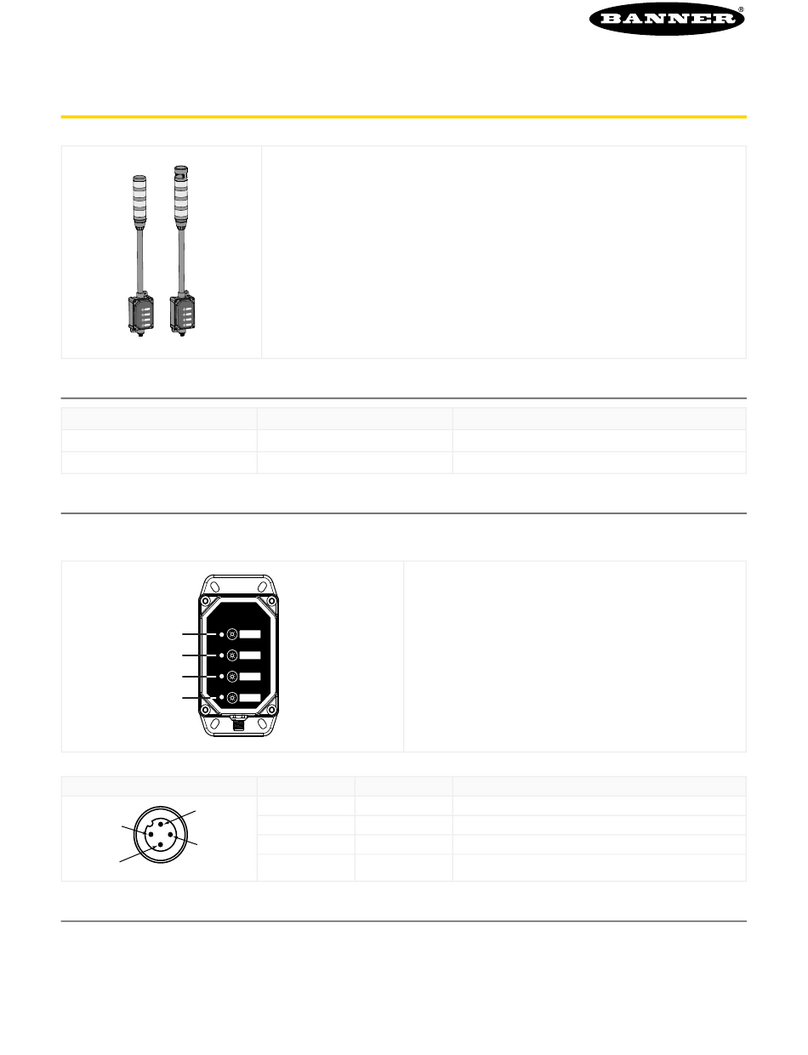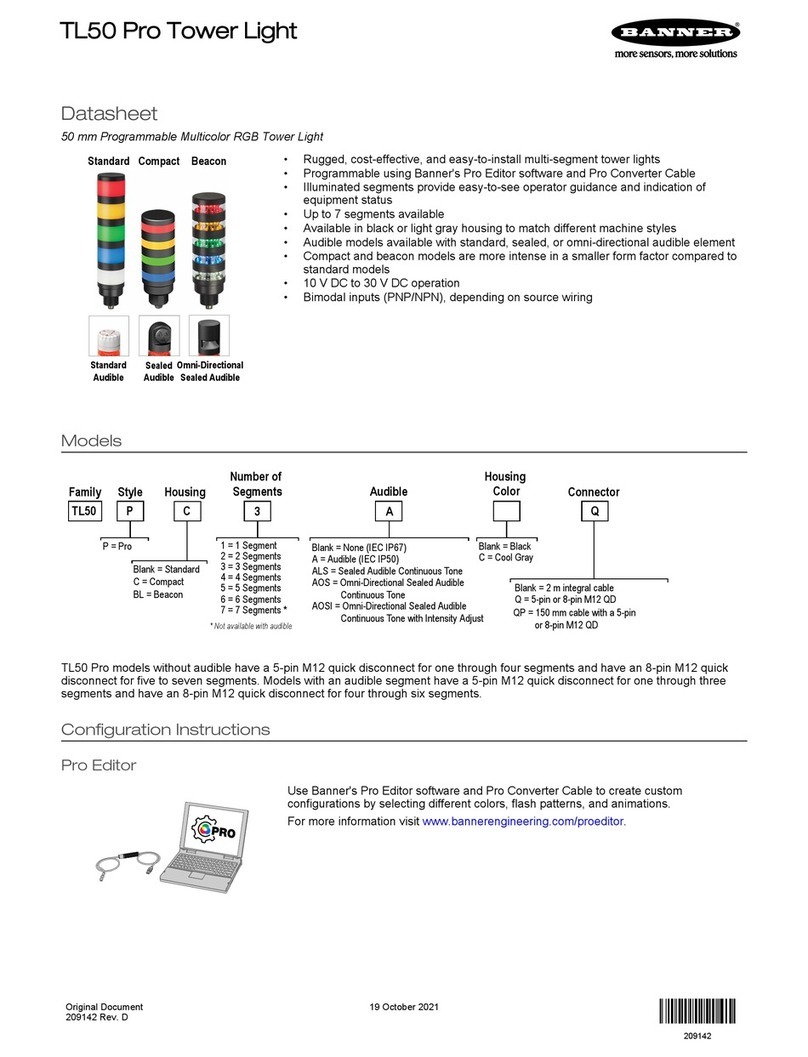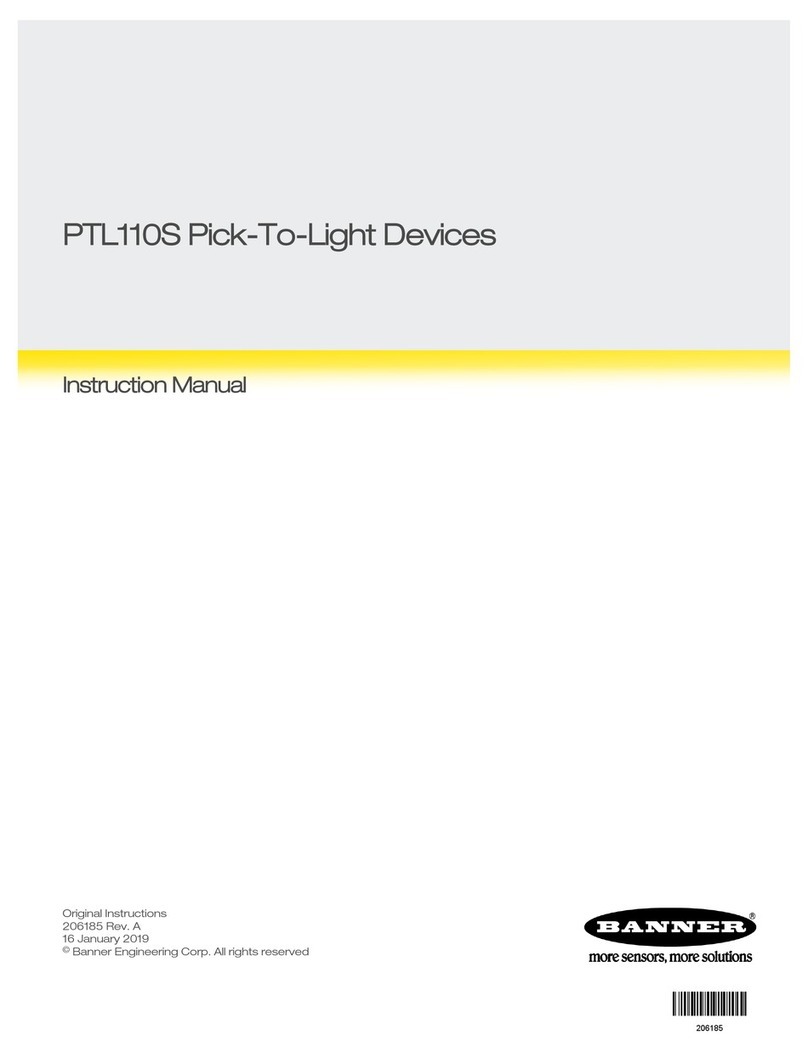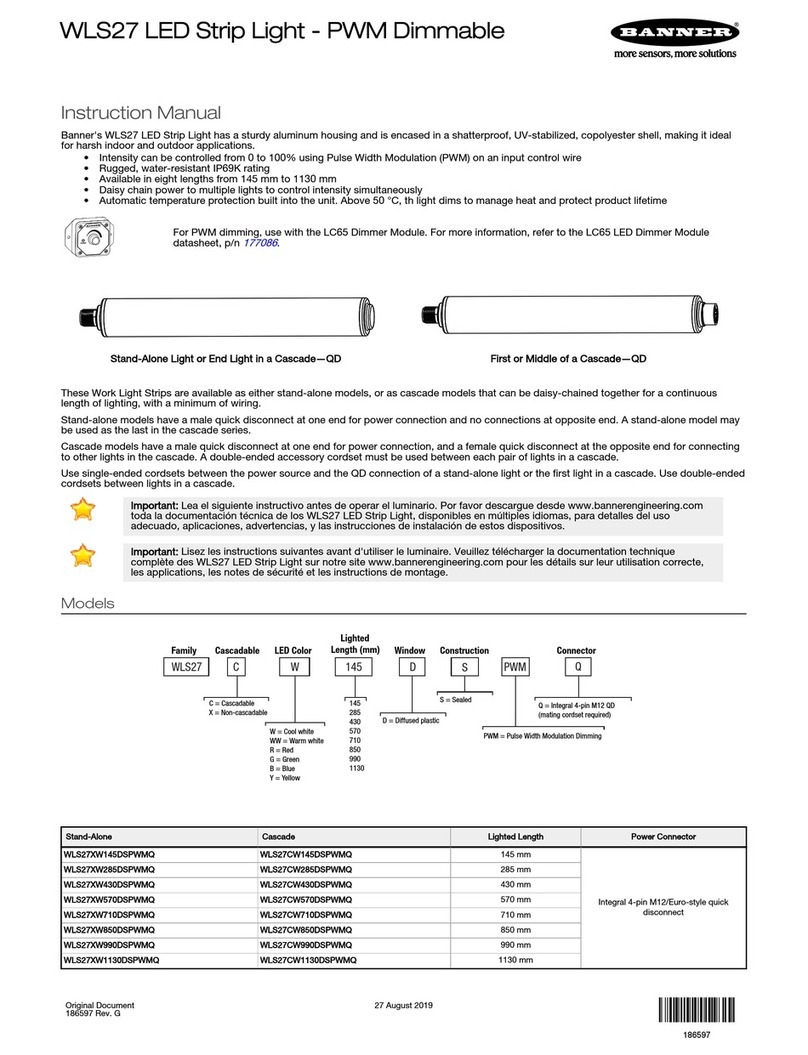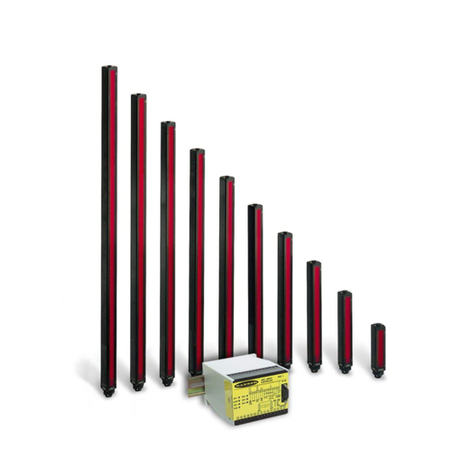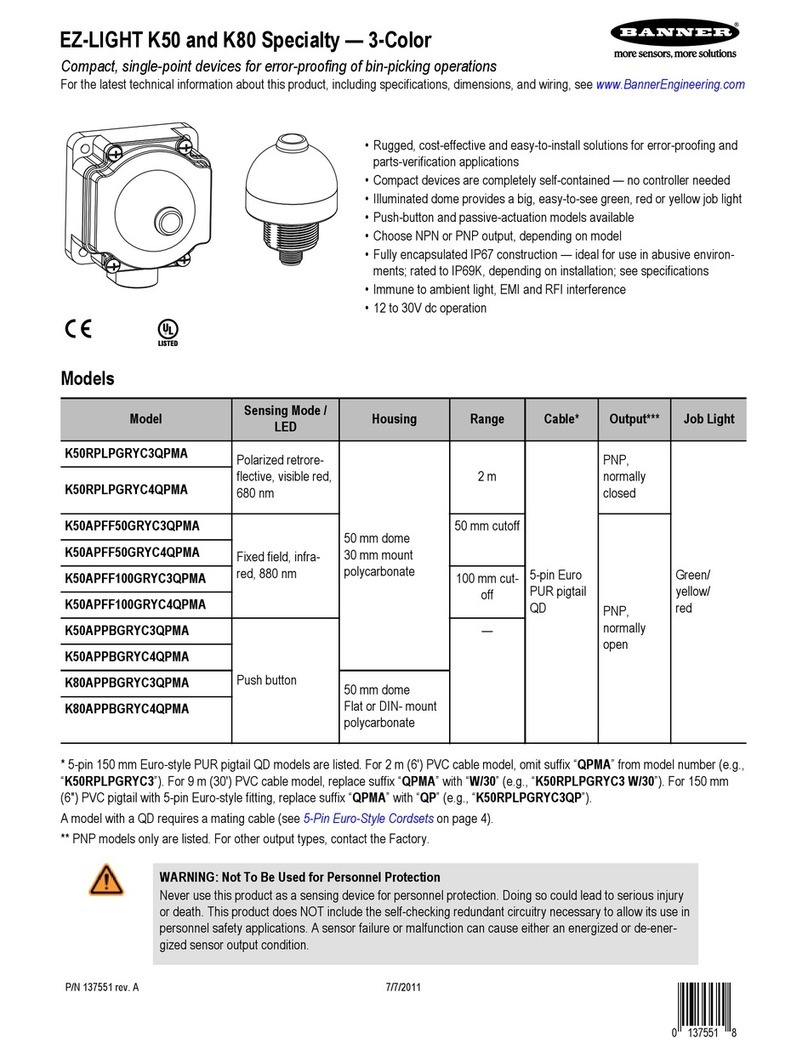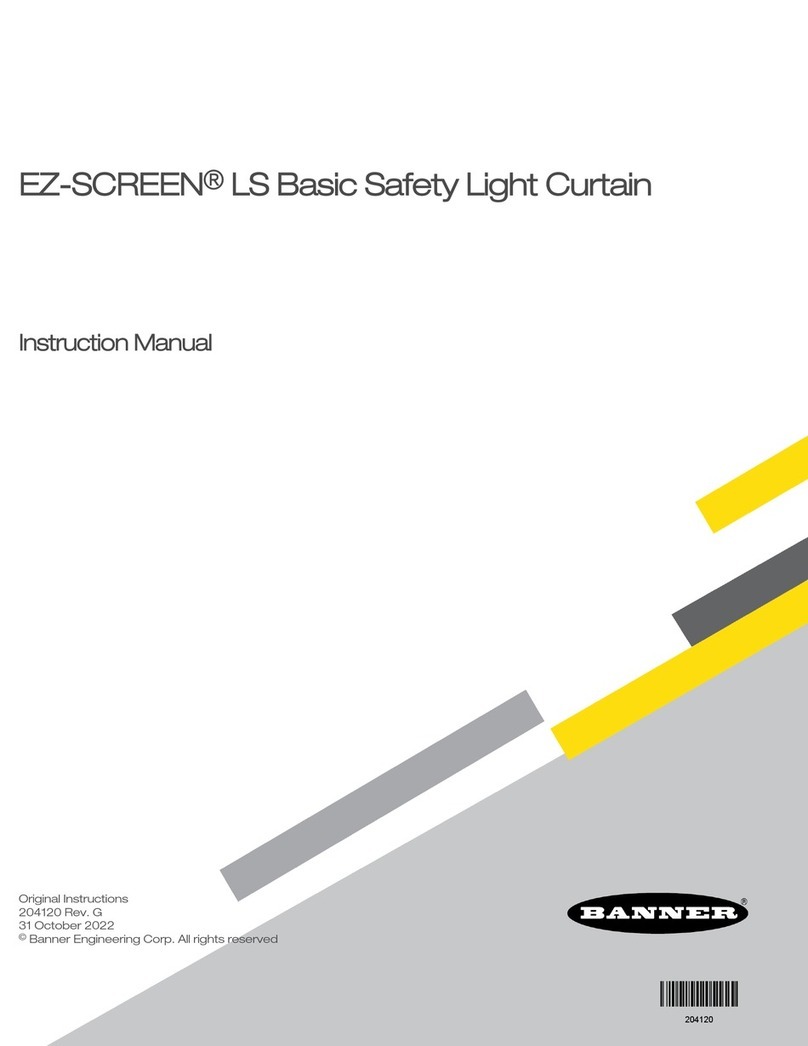
Banner Engineering Corp. • Minneapolis, U.S.A.
www.bannerengineering.com • Tel: 763.544.3164
EZ-SCREEN
Instruction Manual
Table of Contents
Important ...
read this page before proceeding!
In the United States, the functions that EZ-SCREEN is intended
to perform are regulated by the Occupational Safety and
Health Administration (OSHA). Outside of the United States,
these functions are regulated by other agencies, organizations,
and governments. Whether or not any particular EZ-SCREEN
installation meets all applicable requirements depends upon
factors that are beyond the control of Banner Engineering Corp.
These factors include the details of how the EZ-SCREEN is applied,
installed, wired, operated, and maintained. It is the responsibility
of the purchaser and user to apply this EZ-SCREEN System in
full compliance with all relevant applicable regulations and
standards.
EZ-SCREEN can guard against accidents only when it is properly
installed and integrated into the machine, properly operated, and
properly maintained. Banner Engineering Corp. has attempted
to provide complete application, installation, operation, and
maintenance instructions. In addition, please direct any questions
regarding application or use of EZ-SCREEN to the factory
applications department at the telephone number or addresses
shown on the back cover.
In addition to OSHA regulations, several other organizations
provide information about the use of safeguarding devices. Refer
to the American National Standards Institute (ANSI), the Robotics
Industries Association (RIA), the Association for Manufacturing
Technology (AMT), and others (see below). Banner Engineering
Corp. makes no claim regarding a specific recommendation of
any organization, the accuracy or effectiveness of any information
provided, or the appropriateness of the provided information for a
specific application.
The user has the responsibility to ensure that all local, state,
and national laws, rules, codes, and regulations relating to the
use of this safeguarding system in any particular application
are satisfied. Extreme care is urged to ensure that all legal
requirements have been met and that all installation and
maintenance instructions contained in this manual are followed.
1.SystemOverview............................ page1
1.1 Introduction................................... 1
1.2 Applications and Limitations ...................... 2
1.3 Control Reliability: Redundancy and Self-Checking . . . . . 2
1.4 Operating Features .............................. 3
2. System Components and Specifications........... Page6
2.1 Emitter and Receiver Models – 14 mm ............... 7
2.2 Emitter and Receiver Models – 30 mm ............... 8
2.3 Cables ........................................ 9
2.4 Accessories ................................... 10
2.5 Replacement Parts .............................. 16
2.6 Literature ..................................... 16
2.7 Specifications.................................. 17
3. Installation and Alignment....................Page21
3.1 Mechanical Installation Considerations .............. 21
3.2 Mechanical Mounting Procedure ................... 28
3.3 Initial Electrical Connections ...................... 29
3.4 Light Screen Initial Checkout ...................... 30
3.5 Electrical Interface to the Guarded Machine (Permanent
Hookup) ...................................... 34
3.6 Preparing for System Operation.................... 37
3.7 Sensor “Swapability” and the Optional Emitter Hookup. . .37
4. System Operation.......................... Page40
4.1 SecurityProtocol............................... 40
4.2 System Configuration Settings .................... 40
4.3 Reset Procedures .............................. 41
4.4 Status Indicators ............................... 42
4.5 Normal Operation .............................. 44
4.6 Periodic Checkout Requirements . . . . . . . . . . . . . . . . . . . 44
5. Troubleshooting and Maintenance .............. Page45
5.1 Troubleshooting Lockout Conditions ................ 45
5.2 TestMode ..................................... 48
5.3 Electrical and Optical Noise ........................ 49
5.4 Servicing and Maintenance ........................ 49
6. Checkout Procedures ....................... Page50
6.1 Schedule of Checkouts........................... 50
6.2 Commissioning Checkout ........................ 50
6.3 Shift/Daily Checkout............................. 51
6.4 Semi-Annual (Six-Month) Checkout . . . . . . . . . . . . . . . . . 51
7. Cascadeable EZ-SCREEN......................Page52
7.1 Overview of Cascading........................... 52
7.2 Cascadeable Emitter and Receiver Models – 14 mm . . . . 54
7.3 Cascadeable Emitter and Receiver Models – 30 mm . . . . 55
7.4 Determining Interconnect Cable Lengths ............. 56
7.5 Response Time for Cascaded Light Screens. . . . . . . . . . . 58
7.6 Cascaded Sensor Configuration Settings . . . . . . . . . . . . . 60
7.7 Programming for Cascaded Operation............... 60
7.8 E-Stop Buttons and Rope/Cable Pulls ............... 61
7.9 Positive-Opening Safety Interlock Switches............62
Glossary of Terms . . . . . . . . . . . . . . . . . . . . . . . . . . . . Page 64
Safety Standards and Regulations . . . . . . . . . . Inside Back Cover
U.S. Standards Applicable to Use of EZ-SCREEN
OSHA 29CFR1910 Occupational Safety and Health Standards
ANSI B11 Standards Safeguarding of Machine Tools
ANSI/RIA R15.06 Safety Requirements for Robot Systems
NFPA 79 Electrical Standard for Industrial Machinery
See inside back cover for information pertaining to
applicable U.S., European and International standards,
and where to acquire copies.

